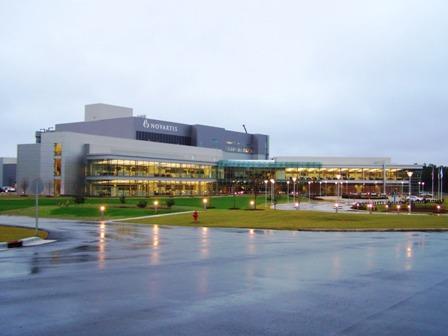The US Food and Drug Administration (FDA) has approved the first US facility that can make cell-culture influenza vaccines, a Novartis plant in Holly Springs, N.C., that has been part of federal government efforts to prepare for a pandemic and to sidestep some limits of egg-based flu vaccine technology.
Novartis said in a press release today that the approval clears the way for commercial production to begin at the site and for Flucelvax, its seasonal flu vaccine, to be made in the United States for the first time. The vaccine, approved in November 2012, was the first cell-based flu vaccine to receive FDA clearance, and the first doses—made in the company's German production facility—entered the US market during the 2013-14 flu season.
Flucelvax, an inactivated trivalent vaccine approved for use in adults, contains flu viruses grown in mammalian cell cultures. Though cell-culture methods have been used to make other US-licensed vaccines, Flucelvax is the first US flu vaccine to be made with the process. The technology is designed to make production faster and more flexible, because the cells can be banked and there is no need for an egg supply.
Development of the vaccine, underway since 2006, and construction of the Holly Springs facility have been a public-private partnership between Novartis and the Biomedical Advanced Research and Development Authority (BARDA), part of the US Department of Health and Human Services (HHS). HHS invested $487 million toward constructing and certifying the Holly Springs facility. Federal officials have said the plant is designed to make 150 million doses of monovalent vaccine within 6 months of the start of a pandemic.
The facility opened in late 2011 and has produced pre-pandemic H5N1 vaccine. The facility had already received a separate "pandemic ready" certification. Novartis said in its press release that it used its cell-based technology to develop a vaccine candidate against the H7N9 avian influenza virus that is infecting people in China. The company said the Holly Springs facility supplied a stockpile of H7N9 vaccine to the US government before the second wave of the outbreak.
Gretchen Michael, a spokeswoman for HHS's Office of the Assistant Secretary for Preparedness and Response, told CIDRAP News today that the H7N9 supply that Novartis delivered to the government consists of bulk antigen. So far no decision has been made to make a government-funded H7N9 vaccine.
A comprehensive 2012 report on flu vaccines from a research team led by the University of Minnesota's Center for Infectious Disease Research and Policy (CIDRAP), the publisher of CIDRAP News, said cell-based flu vaccine platforms could yield an incremental improvement in the vaccine production timeline and increase production volume. However, it said a cell-based vaccine used in Europe during the 2009 H1N1 pandemic didn't speed vaccine delivery and that "game changing" vaccines that are more effective and use novel antigens are still needed for battling seasonal and pandemic flu.
A 2010 report from President Obama's science advisors on factors that led to the late delivery of the 2009 H1N1 vaccine also said cell-culture vaccines would somewhat reduce the time needed to make the first pandemic vaccine doses, but added that the larger benefit would be making more doses to immunize the population.
See also:
Jun 16 Novartis press release
Nov 21, 2012, CIDRAP News story "FDA clears first cell-based flu vaccine"


















